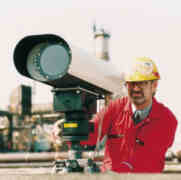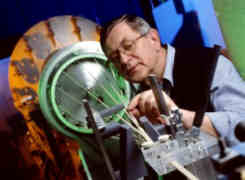
Silicon still has a lot to offer the microelectronics industry
The end is not nigh for silicon chips. They have “enormous remaining potential”, predicts a new analysis of the limits of integrated circuit technology 1 .
By around 2011, chips could be holding thousands of times more transistors than the billions they house today, calculate James Meindl and colleagues at Georgia Institute of Technology in Atlanta. Trillion-transistor chips are known as ’terascal
Embargo until September, 6 2001
E-BioSci is a new, next generation scientific information service initiated by EMBO to meet the future needs of researchers in the life sciences and funded by the European Commission with 2,4 million Euro over three years. The service – aimed at establishing Europe’s leadership in one of the most important and fast moving scientific fields of our day – will offer scientists and other researchers new forms of navigation through the dramatically increasing floo
Delta Debugging automates the scientific method of debugging. The basic idea of the scientific method is to establish a hypothesis on why something does not work. You test this hypothesis, and you refine or reject it depending on the test outcome. When debugging, people are doing this all the time. Manually. Delta Debugging automates this process. Read more…
The Problem Considerable progress has been made in basic research and software development for modeling traffic flow. However, user-friendly and affordable services which could prevent a car driver from getting stuck in a traffic jam are not yet as effective as they could be.
Dynamic guidance covering the major highways has already been implemented in many European countries. On secondary roads, and especially across major

Air pollution used to be something you could see and smell. But as air quality standards have tightened, the air over most industrial sites, airports and cities has gradually cleared. Nevertheless, invisible toxic agents such as ethyl benzene, butadiene and styrene continue to pose risks to public health. With a view to detecting and quantifying these agents, Siemens Environmental Systems Limited in Poole, England has introduced UV Falcon. The system consists of a transmitter that projects a UV (ult

Future generations of electric trains may use considerably less power than they do today thanks to the development of the first high temperature superconducting (HTS) cable. To produce the cable, Scientists at Siemens Corporate Technology in Erlangen, Germany started out with micron-sized particles of a brittle ceramic material. The particles were then embedded in a silver alloy. Through repeated rolling stages and annealing, the material was turned into ribbon-shaped wires. To make a cable from suc